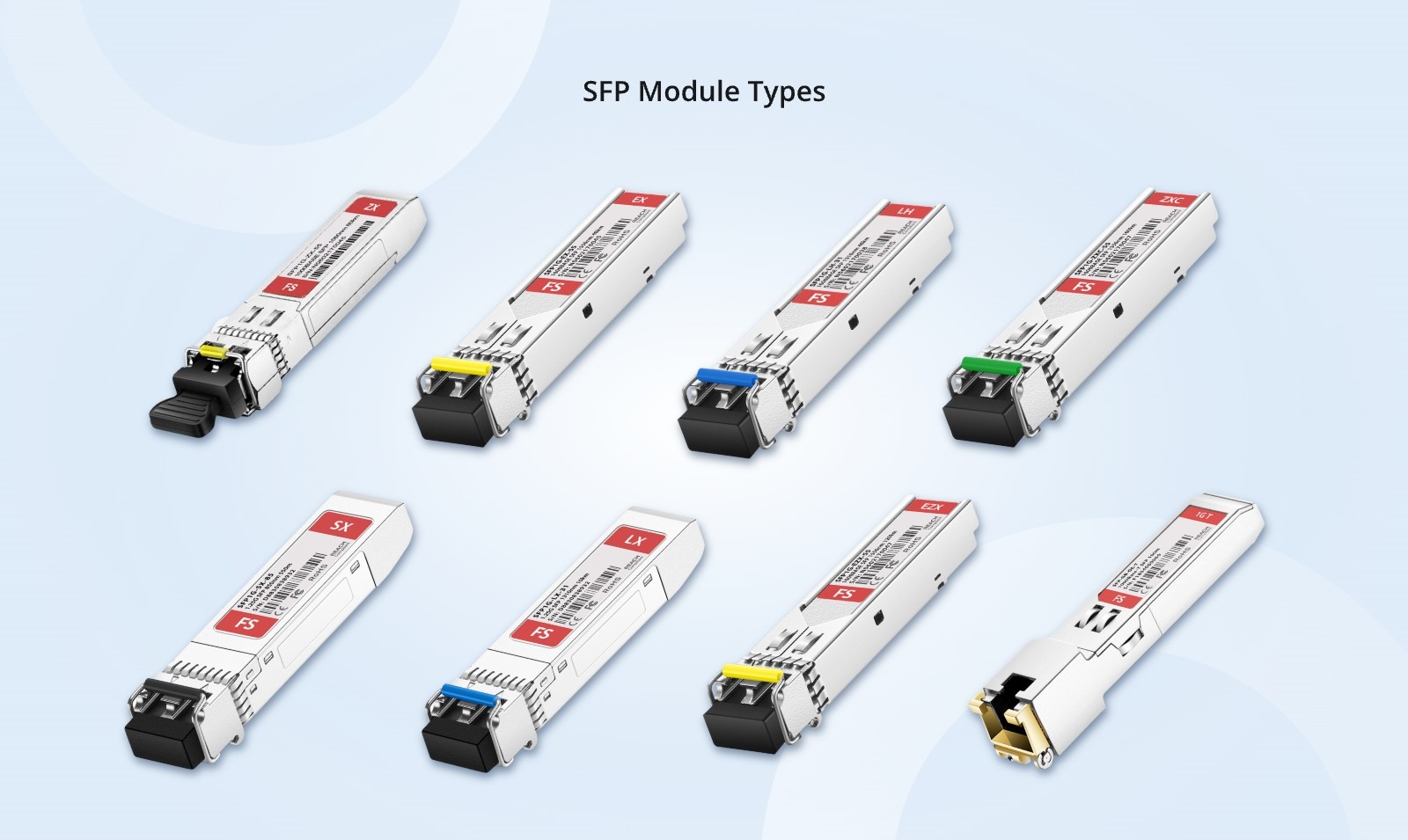Why SFP Modules Remain Essential in Modern Networks?
In today's dynamic networking landscape, characterized by the critical factors of speed, reliability, and cost-effectiveness, 1G Small Form-Factor Pluggable (SFP) transceivers are essential elements for ensuring network performance and success. Despite the emergence of newer, higher-speed networking solutions, the enduring relevance of 1G modules persists across diverse scenarios, owing to their distinctive features. This article aims to elucidate the crucial role of 1G SFP modules in contemporary networking ecosystems and examine the reasons behind their continued relevance amidst the rapid advancement of technology.
A Brief Introduction to SFP Modules
The 1G SFP module represents a crucial networking component engineered to enable data transmission at a speed of 1 Gigabit per second (1 Gbps), catering to various networking requirements. Despite the advent of faster alternatives, the enduring popularity of 1G modules persists due to their seamless compatibility, cost-effectiveness, and proven reliability. As such, they continue to serve as a cornerstone in modern networking infrastructures, seamlessly integrating with existing systems while delivering optimal performance and value.

Exploring The Advantages of SFP Modules
Cost-Efficiency Network Connection
SFP modules are a cost-effective solution for network expansion and upgrades, allowing for progressive growth without requiring significant infrastructure investments. Despite the introduction of faster Ethernet standards, SFP modules remain cost-effective, finding a balance between performance and financial limitations. This cost-effectiveness is especially appealing to enterprises looking to optimize the value of their networking investments.
Reliability Under All Conditions
SFP modules are highly regarded for their reliability under a variety of scenarios. These modules provide consistent performance even in tough situations like severe temperatures or electromagnetic interference. Their robust design and high-quality components help to ensure continuous data transmission and network reliability. Their durability minimizes the need for frequent replacements, reducing downtime and associated expenses.
Real-World Applications Across Industries
Renowned for their stability, adaptability, and reliability, the 1G SFP modules ensure consistent and reliable connections, making them ideal for a wide range of applications across industries: - Data Centers: Supporting high-density data center environments with cost-effective, high-performance networking solutions. - Telecommunications: Used for connecting cell towers and central office equipment, ensuring dependable network coverage. - Finance: Ensuring secure and high-speed data transfer within financial institutions to maintain transactional integrity. - Education: Enhancing connectivity within educational institutions, enabling smooth online learning and collaboration experiences. - Healthcare: Facilitating seamless communication within hospital networks to support critical patient care operations.
Seamless Maintenance and Troubleshooting
SFP modules offer significant advantages in terms of seamless maintenance and troubleshooting. These modules enable proactive maintenance by allowing for easy replacement without disrupting network operations. With their hot-pluggable design, faulty modules can be quickly identified and replaced, minimizing downtime and ensuring continuous network reliability. Additionally, the interchangeability of SFP modules simplifies troubleshooting processes, as technicians can swiftly swap modules to isolate and address issues.
The Vital Role of SFP Modules in Modern Networking
In the era of multi-gigabit and even terabit networking, one might question the relevance of SFP modules. However, these modules still find their place in various modern networking needs. They act as a bridge between legacy devices and newer networking technologies, ensuring seamless communication in mixed environments. Furthermore, in scenarios where high-speed connections are not the primary requirement, SFP modules offer a balanced solution that meets the demands of the application without unnecessary complexity.
Balancing Cost and Performance
When organizations assess their networking needs, cost considerations frequently exert a substantial influence on decision-making processes. SFP modules present a financially efficient option for applications that do not require ultra-high speeds. By leveraging existing infrastructure and taking advantage of the reduced cost associated with 1G technology, organizations can strike a balance between performance and budgetary constraints.
Adapting Mixed Network Environment
The adaptability of SFP modules to diverse networking environments stands as a significant advantage. Imagine an organization that recently enhanced its network to accommodate higher speeds, while still relying on some legacy devices. Utilizing SFP modules facilitates the integration of these devices into the updated network infrastructure, sparing the organization from expensive and elaborate modifications. This interoperability guarantees a seamless transition process, preserving compatibility throughout the network.
Optimizing Compatibility for Seamless Integration
SFP modules serve not only to bridge the gap between older and newer technologies but also to establish a dependable and uniform communication infrastructure. For example, in settings where diverse devices possess varying networking capacities, SFP modules serve as a unifying interface. This interoperability not only prolongs the longevity of legacy equipment but also streamlines the assimilation of emerging technologies.
Conclusion
In the ever-evolving landscape of networking driven by high-speed technologies, the significance of SFP modules endures. Their remarkable adaptability, compatibility, and cost-effectiveness render them indispensable in contemporary networking ecosystems. Whether tasked with integrating legacy systems, optimizing the delicate equilibrium between performance and cost, or facilitating seamless interoperability across diverse technologies, SFP modules persist as linchpins in today's interconnected milieu. As we chart the course of networking's future, the versatile SFP modules stand as a steadfast and adaptable solution, attuned to the evolving demands of enterprises and institutions on a global scale.
You might be interested in
Email Address

-
PoE vs PoE+ vs PoE++ Switch: How to Choose?
Mar 16, 2023














